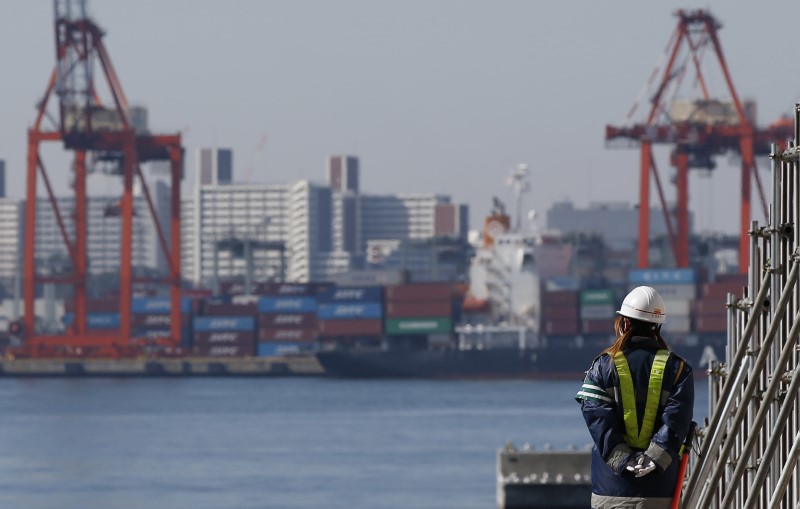 © Reuters. FILE PHOTO: A worker walks near a container area at a port in Toky
© Reuters. FILE PHOTO: A worker walks near a container area at a port in TokyBy Kaori Kaneko
TOKYO (Reuters) – Japan is considering slapping tariffs on U.S. exports worth $409 million in retaliation against steel and aluminum import tariffs imposed by President Donald Trump, public broadcaster NHK said on Thursday.
The government is preparing to notify the World Trade Organization of the plan, a necessary procedure under global trade rules, this week, NHK said.
The move is likely to be part of efforts to have Washington add Japan to a list of countries exempted from the U.S. tariffs.
Tokyo’s planned retaliatory tariffs on U.S. exports would be the equivalent value to duties imposed by Washington via its tariffs, according to NHK.
A government official said while Tokyo has been considering taking some form of action based on WTO rules, no final decision has been made on whether to take retaliatory steps.
“Nothing has been decided on what specific response we should take. We’re scrutinizing the impact of U.S. tariffs on Japanese companies, and calling for Washington to offer Japan an exemption,” the official told Reuters on condition of anonymity as he was not authorized to speak publicly.
Japan is the only major U.S. ally that did not receive exemptions from Trump’s tariff decision, which came as a shock to many policymakers given Japanese Prime Minister Shinzo Abe’s close ties with the president.
Tokyo has been wary of joining in the footsteps of China and the European Union, which responded to the U.S. decision with reciprocal threats, given Japan’s strong defense ties with the United States.
But some government officials have not ruled out the possibility of raising a trade dispute against the U.S. move to the WTO.
Fusion Media or anyone involved with Fusion Media will not accept any liability for loss or damage as a result of reliance on the information including data, quotes, charts and buy/sell signals contained within this website. Please be fully informed regarding the risks and costs associated with trading the financial markets, it is one of the riskiest investment forms possible.
Source: Investing.com



























